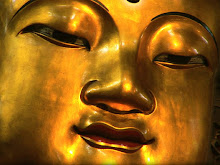The use of sexual energy for spiritual attainment, sometimes called dual cultivation, has been practiced for health and spiritual cultivation in both the West and East for centuries. In the West it was sometimes called sex magic and was used in both religious and magical pursuits. The fundamental concept of dual cultivation and sex magic is that sexual energy is an extremely powerful force; when we harness this potent energy we can use it for attaining transcendent states.
In some schools it was the orgasmic release that was thought to confer power upon the celebrants; an example of this is in the union of the High Priestess and the High Priestas they celebrate the Great Rite of Wicca in European pagan schools. In other schools it was thought that retention of the orgasm freed up great areas of creative and spiritual energy. It was believed that in the transmutation of the orgasm one could be lifted into greater heights of energetic and spiritual attainment.
In India the study of sexual yoga covered a wide range of practices. One can travel to the great temple of Konorak to see these holy buildings absolutely covered with hundreds of intertwined figures having sex in every sort of posture possible. Rather than viewing this as pornographic the Indians see it as the god and goddess at play.
The image of yab-yum is a common symbol found in India, Bhutan, Nepal, and Tibet. This image is that of a male deity in sexual union with his female consort, usually sitting in his lap and facing him. The male figure usually represents the quality of compassion and the female figure that of insight. This is actually a representation of an inner union, one that takes place within the body and psyche of the tantric practitioner. It often represents the mystical union of wisdom and compassion. Yab-yum can also be connected to the tantric practice of Karmamudra. This practice involves having a physical partner as well as the practice of tummo or inner heat.
Dual cultivation was taken very seriously in some tantric Buddhist circles. In Tibet one sees many tankas (religious paintings) of various divinities, male and female, in conjoined bliss. There are, of course, many layers of meaning in these images.
Tibetan ritual chanting practice also uses two objects. The dorje, called the Diamond Thunderbolt Scepter, is the male and represents compassion. The bell is the female and represents wisdom. Manipulated together during ritual, these two objects dance together in a cosmic dance of male and female, compassion and wisdom. In some schools of Buddhist practice, trying to reach enlightenment without tantric union is likened to using water to churn butter.

No comments:
Post a Comment